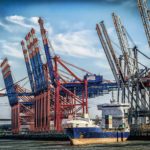Why ASEAN matters to Australia’s mid-sized firms

ASEAN is vital to our regional prosperity and security. Since the report ‘Why ASEAN and Why Now’ was published in 2015, ASEAN has become more prosperous and its trade and investment partnership with Australia has strengthened.
ASEAN’s openness to trade, sound institutions and relatively low inequality has helped maintain its
impressive growth record. ASEAN’s integrated Economic Community has realised its potential and made it faster, easier and cheaper to do business and deliver products and services to its 334 million-strong consumer class and the world.
ASEAN’s population is young and digitally connected. They live longer and they’re happy to spend on travel, quality produce and healthcare. Many are educated abroad but there are still gaps in skills across the region. Workforce training is in demand and governments and people are willing to pay for it
Half of ASEAN’s 700 million people live in cities. Forty cities contain populations of 1 million or more. Meanwhile regional cities have boomed thanks to intersecting travel, trade and digital connections. Massive infrastructure spending has sustained growth. The skills to help manage the transport, energy and logistical pressures of these expanding cities are prized.
ASEAN as a region accounted for 6.8 per cent of world total trade in 2016, and received 5.8 per cent of the world’s foreign direct investment inflows.
ASEAN is increasingly at the crossroads of world trade, but the real story and attraction lies in its substantial growth prospects.
This potential is a result of factors including favourable demographics, rising urbanisation, relatively low national debt levels, abundant natural resources, and proximity to the powerhouse economies of China and India.
The diversity of ASEAN markets, both between and within countries, remains a challenge but also represents an opportunity for Australian business. The ASEAN Community is continuing to develop a harmonised economic market to achieve lasting growth and prosperity across the region.
Research suggests that Australia is well behind other economies including the United States, China and Japan in levels of trade and investment with ASEAN.
To remain internationally competitive, Australian businesses need to move now to build relationships, establish connections and expand their footprints to optimise their chances of capitalising on ASEAN’s future growth.
Now is the time for Australian business to focus on our nearest neighbours, to understand and pursue the once-in-a-generation opportunities that the region offers.
ASEAN is vital to our regional prosperity and security. Since the report ‘Why ASEAN and Why Now’ was published in 2015, ASEAN has become more prosperous and its trade and investment partnership with Australia has strengthened.
ASEAN as a region accounted for 6.8 per cent of world total trade in 2016, and received 5.8 per cent of the world’s foreign direct investment inflows.
ASEAN is increasingly at the crossroads of world trade, but the real story and attraction lies in its substantial growth prospects.
This potential is a result of factors including favourable demographics, rising urbanisation, relatively low national debt levels, abundant natural resources, and proximity to the powerhouse economies of China and India.
The diversity of ASEAN markets, both between and within countries, remains a challenge but also represents an opportunity for Australian business. The ASEAN Community is continuing to develop a harmonised economic market to achieve lasting growth and prosperity across the region.
Research suggests that Australia is well behind other economies including the United States, China and Japan in levels of trade and investment with ASEAN.
To remain internationally competitive, Australian businesses need to move now to build relationships, establish connections and expand their footprints to optimise their chances of capitalising on ASEAN’s future growth.
Now is the time for Australian business to focus on our nearest neighbours, to understand and pursue the once-in-a-generation opportunities that the region offers.
For more information, see the ASEAN Now report from Australia Unlimited from which this data was derived.








